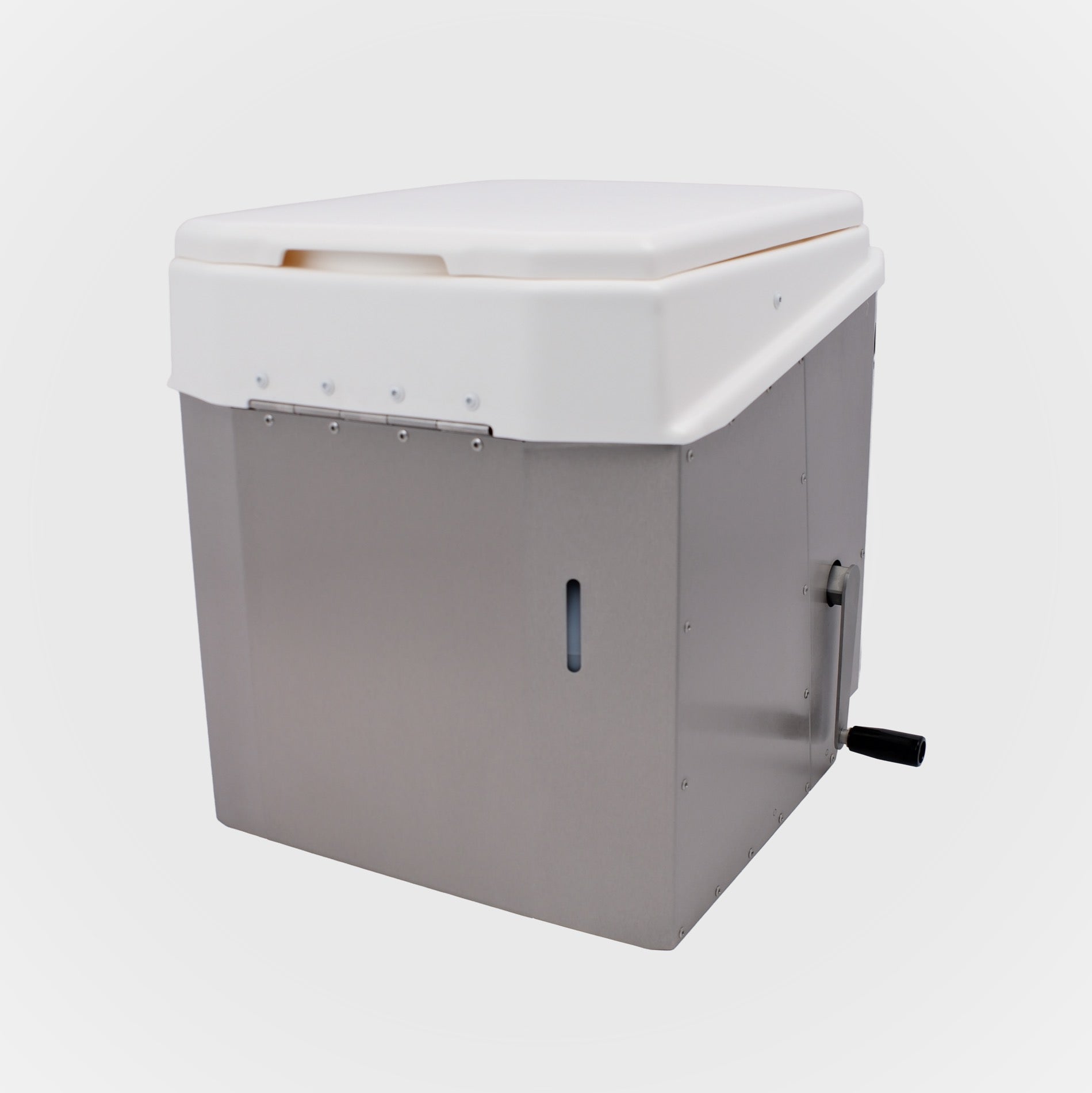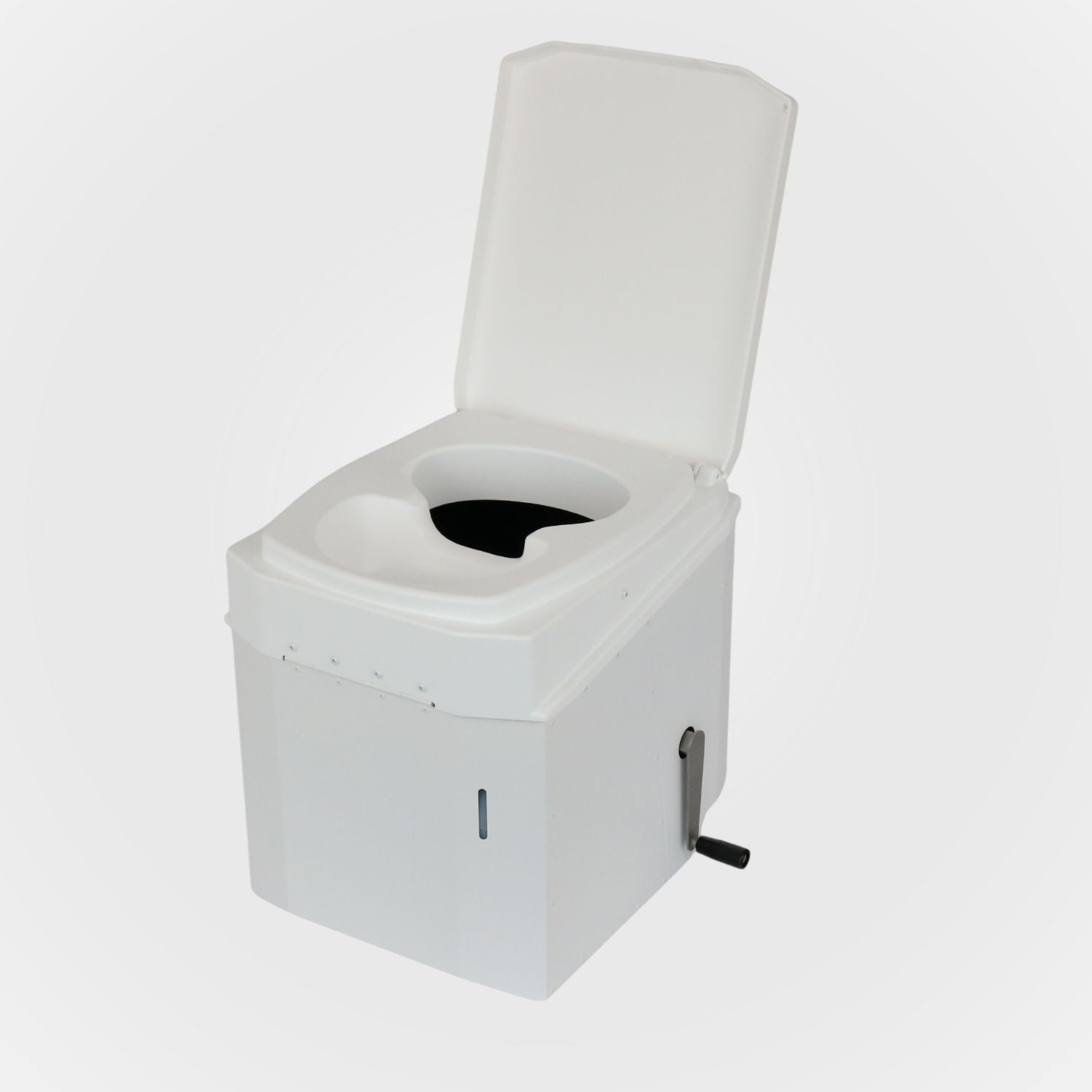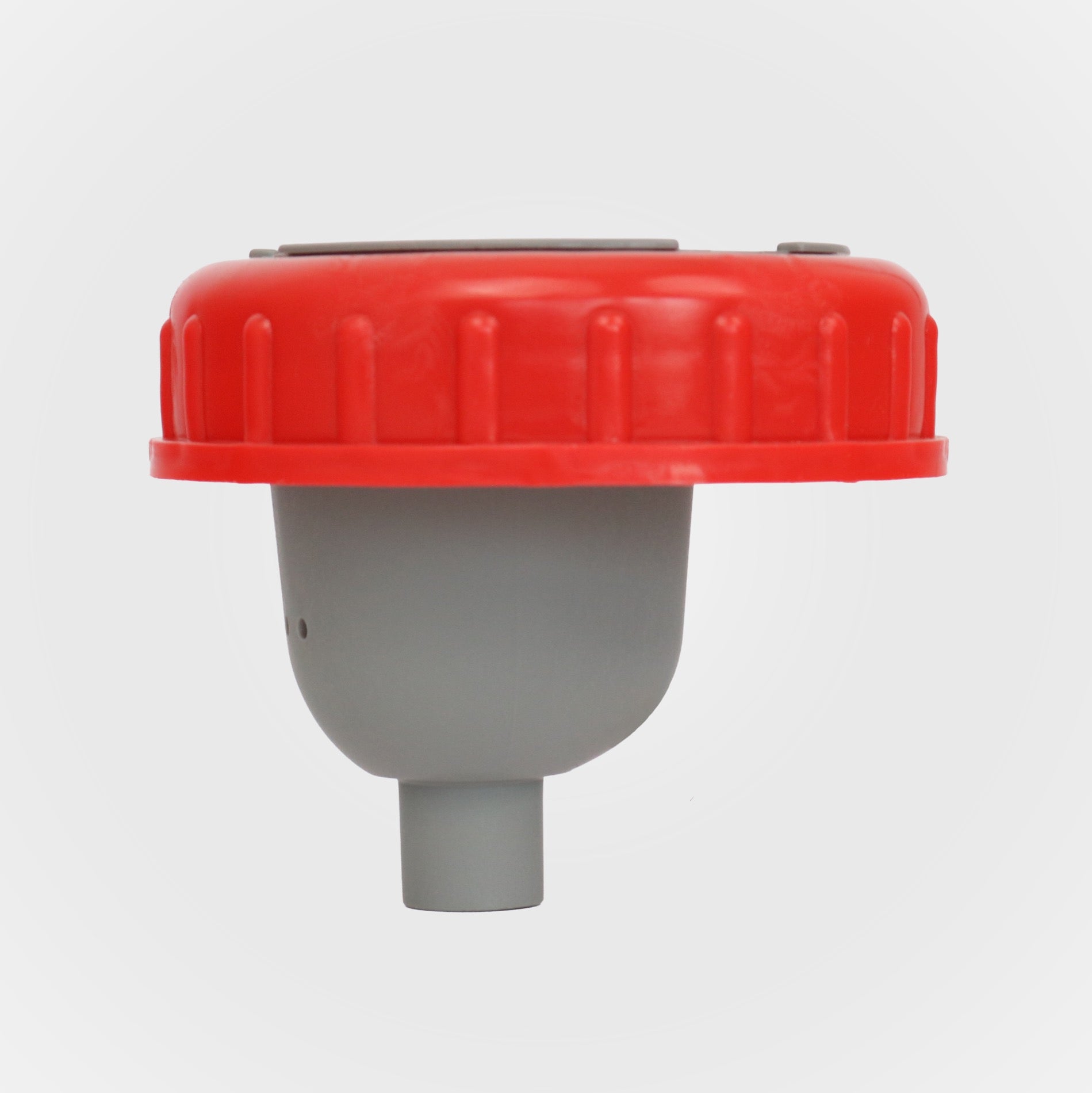Blogs: Knowledge about composting toilets & green concepts | BioTioo
Allotment garden toilet: Wastewater-free solutions for the allotment garden
A garden toilet is more than just a simple restroom at the edge of the plot these days. For many allotment gardeners, it's an integral part of gardening, as nobody wants to have to constantly trek home after a long day in their garden. Especially for families or when gardening friends are frequent visitors, a functioning and hygienic toilet on site offers real convenience. Here's what you need to know about having a toilet in your allotment garden. A hygienic toilet in the garden – wastewater-free and compliant with regulations. The challenge with allotment gardens: Most allotment sites lack a connection to the sewer system. Traditional flush toilets, septic tanks, outhouses, or open pits are strictly prohibited because they would endanger the groundwater. Therefore, many associations have clear regulations that only permit wastewater-free systems – entering the world of dry toilets, chemical toilets, and composting toilets. These operate completely without water and keep both the garden and the groundwater clean. Laws and rules in allotment gardens: What the Federal Allotment Garden Act requires It is often said that the Federal Allotment Garden Act prescribes clear rules for the construction and operation of a toilet in an allotment garden. Strictly speaking, this is not entirely accurate: The law only prohibits the permanent residential use of the garden shed (§ 3 para. 2 BKleingG) – and thus only indirectly addresses the toilet issue. The actual rules are derived from the Water Resources Act (WHG), the Wastewater Ordinance (AbwV), as well as state and municipal regulations. All toilets where flush water or feces can seep into the ground or groundwater are prohibited. Anyone still using traditional flush toilets, septic tanks, cesspools, or outhouses risks hefty fines. Only wastewater-free toilet systems with sealed collection tanks are permitted. These must function hygienically, must not emit odors, and must be constructed in such a way that urine and flush water cannot seep into the ground. Many allotment garden associations also have additional requirements. These include, for example, privacy screens, minimum distances between structures, and in some cases, even a building permit if a toilet block is planned. Before setting up your allotment garden toilet, you should definitely check with your association and your local council. If you then also organize the disposal of waste correctly, for example via collection points or approved disposal stations, you can always enjoy your time in your allotment garden legally and hygienically. All legal information at a glance Prohibited: Flush toilets, pit latrines, cesspools, septic tanks Permitted: wastewater-free systems such as separating toilets, composting toilets and chemical toilets Requirements: sealed containers, no odor nuisance, no seepage into groundwater Club rules: privacy screens, distances, possible building permit Disposal: exclusively via collection points, disposal stations or as compost according to specifications Systems compared: dry separating toilet, composting toilet, chemical toilet Choosing the right toilet for your garden depends on your needs. The dry composting toilet is the most widely used solution today. The separator insert keeps urine and solids separate: the urine canister collects liquids, while the collection container holds the solid waste. This results in minimal odor, as no ammonia is produced. The advantages: composting toilets require no electricity, are easy to use, and very hygienic. In contrast, composting toilets use coconut fiber bedding. The solid components decompose into compost in the container, which can later be reused in the garden. This is ecologically valuable, but somewhat more prone to odors. Chemical toilets are primarily known from camping. They require chemicals and must be disposed of at special collection points. In many allotment garden associations, they are only permitted to a limited extent due to the chemicals and are considered a less sustainable alternative. Wastewater in the garden: Why wastewater-free is mandatory Uncontrolled wastewater in allotment gardens poses a significant risk. With septic tanks or simple pits, sewage and flushing water seep into the ground, endangering the groundwater. The insidious thing is that even small amounts can lead to pollution that threatens both the environment and human health. For precisely this reason, wastewater systems are prohibited in allotment gardens, and only modern toilets are permitted: these are designed so that no liquid can enter the ground. Here's how to choose the right solution for your plot of land Which toilet type is right for you depends on how you use it. If you only spend weekends in your allotment garden, a compact composting toilet with a small tank is often sufficient. However, if you're traveling with your whole family or many gardening friends, you'll need larger models with a higher capacity. Also not to be underestimated: the design of the plot. For example, do you have room for a separate toilet shed, or would you prefer the toilet bowl to be integrated into the garden shed? A garden toilet doesn't have to be unsightly; on the contrary, with a wooden toilet shed, suitable roofing, and subtle planting, it blends harmoniously into the garden atmosphere. Inside, a comfortable toilet seat, shelves for litter and cleaning supplies, and a sturdy toilet bowl create a thoroughly clean and pleasant experience. Important: Pay attention to accessibility, ensuring a good seat height and comfort – children and elderly gardeners especially benefit from ergonomic, accessible toilets. Installation and operation: Step by step to a garden toilet Choose location Look for a location with short distances, good privacy, and a firm, level surface, such as a garden shed or outhouse. Plan for simple ventilation from the outset to prevent odors. Prepare the substructure Align the floor and substructure, check dimensions, seat height, and access. Mark drilling points to ensure the housing is stable and doesn't wobble. Positioning the case Place the allotment toilet housing at the designated location and level it. Check that all surfaces are easily accessible and cleanable. Insert separating insert Insert the separator into the toilet bowl without tension and align the urine divider facing forward. Check that the guides are properly seated and nothing wobbles. Connect container Connect the urine canister and insert the solids collection container or cassette. Check seals, lids, and closures – everything must be airtight. Mount accessories If needed, install fans or vents with filters, holders for litter and bags, or paper towel holders. This will keep odors to a minimum and also improve handling. Test run and leak check Test the urine outlet with a little water, check the hose routing and the canister closure. Also, briefly open the vent: A noticeable draft indicates that the venting is working correctly. Start operation Place the litter within easy reach. After each use, cover solid waste with litter, close the lid, and ensure consistent and correct separation. Cleaning and care Clean the toilet bowl, separator insert, and housing regularly with lukewarm water and mild cleaning agents. Harsh chemicals are strictly prohibited, as they damage the material and seals. Waste disposal and composting: How to keep everything clean and compliant with regulations Disposing of a dry toilet is simple: The urine is collected in the urine canister and can – depending on regulations – be diluted and used as fertilizer or disposed of via a collection point. Meanwhile, the solid waste ends up in the collection container, is covered with bedding material, and can then either be composted at home or taken to official disposal sites. It is important to adhere to the cleaning intervals and to clean regularly. This keeps the toilet hygienic and the neighborhood free of unpleasant odors. This is how your allotment garden toilet stays fresh permanently. To ensure your garden toilet remains reliable and functional, you should follow a few maintenance instructions. Here's an overview: Use bedding: It binds odors and hygienically covers excrement. Cleaning agent: Mild agent, without harsh chemicals, protects the toilet bowl and tank Summer: Empty more frequently due to heat and increased odor. Winter: Longer intervals are possible due to the cooler temperatures. For garden parties or large gatherings: Plan for additional cassettes or collection containers. Keep an eye on volume capacity: Replace or empty in time BioTioo: your wastewater-free, low-odor solution for the allotment garden With BioTioo, you'll find the perfect allotment garden toilet that functions without producing wastewater and remains maximally hygienic. Our dry composting toilets for the garden impress with robust materials, easy installation, and sophisticated urine separation systems. We provide you with two high-performance models: BioTioo 2.0: More comfortable than its predecessor 1.0, with an optimized seat and easy cleaning. Ideal for families and frequent use. BioTioo 2.0 RL-M: The most convenient option, with an electric agitator. All models operate completely without water and are chemical-free, making them the safest and most hygienic solution for any garden plot. As you can see, with BioTioo you're choosing a garden toilet that is wastewater-free, low-odor, and exceptionally durable. Start now with BioTioo and find the right, sustainable dry composting toilet for your allotment garden – so that nothing stands in the way of your stay in your own plot.
Read more


















